
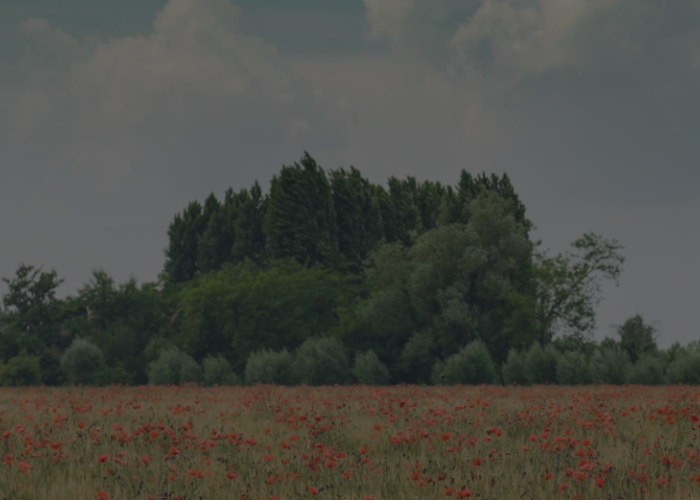
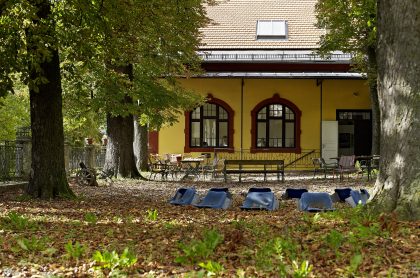
The Fellowship Program for Art and Theory has taken place in Büchsenhausen since spring 2003. The program combines the advantages of a residency with the possibilities of a postgraduate, non-academic research and production fellowship on the basis of an open, non-formalized structure. Content-wise, the program addresses a worldwide public made up of professionals in the fields of contemporary art, architecture, art and media theory, as well as criticism. The Fellows’ works, production methods and themes are made accessible to interested visitors in public events and presentations. At the end of the fellowship there is a thematic group exhibition in which it is offered to the Fellows to present the results of their (artistic) research to a broader public. [Photo: WEST.Fotostudio]
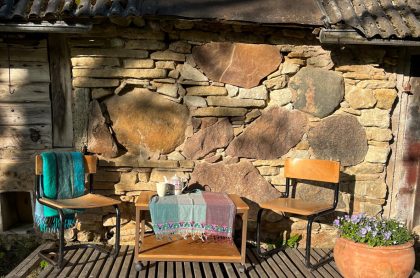
The ELPA Art and Design Residency emerged from the challenge of finding a new location for the Rucka Artist Residency after it vacated its previous space and deciding the future of a small natural farm following the passing of its last owner. The convergence of these two factors laid the foundation for the new residency space, situated in a picturesque natural environment nearby Līvāni town in Eastern part of Latvia. The name of the residency is derived from the Latvian word "elpa," which translates to "breath." This symbolizes the concept of taking a breath, the act of breathing in and out, and the idea of giving something a second life. The ELPA Art and Design Residency is a space for the exchange of ideas, the acquisition of new knowledge, and the implementation of ideas that arise from these intersections.

In 2002 a collective of young artists founded NGO Interdisciplinary Art group SERDE. SERDE developed the public workshop centre with technical equipment for experimental and innovative projects, and every summer SERDE residencies and workshops centre hosts international artists with different art backgrounds and projects. Many of them have an impact to the local environment and give input to the local community – sculptures and a mural in town, open studios and performances, etc. and offers residencies for local and international artists, culture workers, activists, managers and scientists. During the residencies for additional cost we offer a certain amount of professional assistance for creation of work, technical help and consultations. This has to be discussed and negotiated before the residency. At the end of residence we offer our technical equipment and premises for a concluding exhibition or presentation in Aizpute.

This independent, not-for-profit gallery was established in 1995 and is known as a foremost centre for contemporary art in Slovakia. In 1996 they turned the ruined synagogue of Samorin into a centre for contemporary art. This unique gallery hosts site-specific installations, concerts, and cultural events and works with artists and curators from home and abroad to encourage cultural exchange. We offer short term residency possibilities for artists, musicians, and writers, and accept proposals for site-specific installations. Artists must find their own funding sources for the residency or exhibition. The renovated former Jewish school close to the synagogue houses the residence.
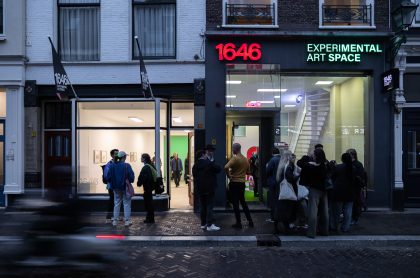
1646 is an art space in The Hague with an experimental, international and free public program. 1646 wants to contribute to an increasingly complex society by challenging existing systems and traditional views, to reflect on the questions that live among us all. 1646 offers fully-funded residencies for (inter)national artists and curators to stay and work/research at our location in The Hague. These residencies support innovative practices, develop global networks, and engage the local art community. Residents are invited to stay at 1646’s guest apartment and work in the residency studio. The residency is not focused on an end result, but provides a space for research, work and reflection, while getting familiar with The Hague and The Netherlands. A public event concludes the residency period. [Photo: Maarten Nauw]

Bridge Guard-Residential Art / Science Centre supports artists, scientists and personalities from other professions who work on projects which place emphasis on uniting, connecting, and bridging. Support consists of making possible a 3 to 6 months’ sojourn in the “Bridge Guard” residence in Štúrovo, Slovakia, with the right to work in complete freedom on one’s own project, and with only minimal duties. The post of Bridge Guard requires a person in whose work boundaries of countries or eras are bridged, mental, social, religious or political boundaries are crossed, different scientific fields are connected, or various artistic media are utilized. He or she works on topics such as integrating, bridging, connecting, uniting opposites, exploring and moving boundaries, encountering the unknown in others and within oneself.
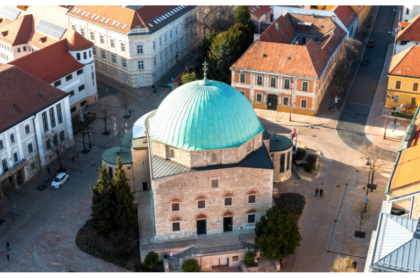
The Pécs Writers’ Program, which is located in the city of Pécs in southwestern Hungary, was launched in 2007. The program is a familiar solution used the world over to help cultivate and maintain relationships among people active in contemporary literature. One of the essential features of the Writers’ Residence program in Hungary is that they give the authors who spend time here a chance to familiarize themselves with the towns and cities in which they live and work, make friends and acquaintances, build ties with other authors and people in the publishing world, and develop an attachment to the country and its culture. On some level, they become “cultural ambassadors” who take knowledge of Hungary and of Hungary’s literature and culture back to their homelands and with them in their travels the world over. The relationships they develop with other authors during their time in Hungary become part of a larger international network. [Photo: official website]
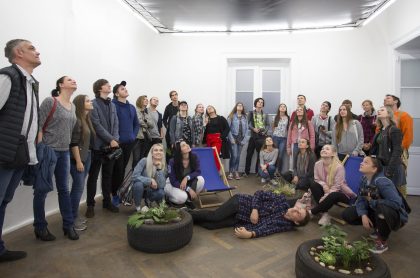
K.A.I.R. Košice Artist in Residence was implemented in 2011 as one of the key projects within the frame of “European Capital of Culture” by the NGO “Kosice 2013”. The NGO transformed to Creative Industry Košice, an organization, where K.A.I.R. had stable ground to develop the international activities and network of partners. In 2016, KAIR became an independent association. The residency program is for artists from all over the world and out of all artistic disciplines and expressions. We give them the possibility to work in the inspiring environment of Košice’s singular cultural surrounding to realize art projects, collaborate with the agile local art scene and present themselves to the local and national public. We choose artists based on open calls in cooperation with our international partners. Until now, we have sent and invited artist from different countries like e.g. Poland, Germany, Georgia, Ukraine or Japan.
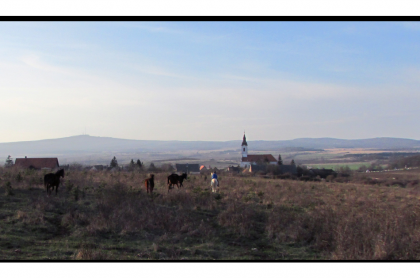
The Horse and Art Research initiative is a unique residency program since 2015 and was established for those interested in combining equine knowledge and visual arts. We are looking for artists, art historians and researchers, who are interested in horse and the place of the horse in art, however we also welcome riders, who are not artists but are open for it. The short (1 or 2 weeks duration) intensive summer course include theory, lectures, talks and discussions, daily practice and lessons of horsemanship, horse archery and riding, as well as there is an opportunity to make studio based work. We plan to organize the program regularly with different research themes each year. It is our intention to offer the opportunities for artists with practices coming from both western and eastern traditions and to open up connections for artists, riders and researchers internationally with the possibility of developing professional collaborations. We would also like to explore points of connection between equine culture, art and sustainable development issues. [Photo: official website]
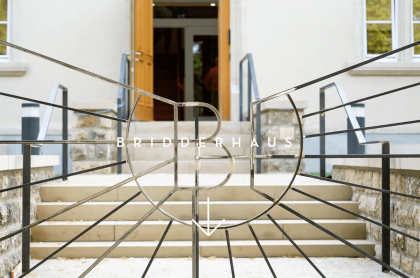
The Bridderhaus art centre was built in 1873 as the first hospital in the city of Esch-sur-Alzette. Open to all contemporary artistic disciplines, the Bridderhaus is primarily a place that is dedicated to artists. It is also a place that is open to the public for encounters, performances, conferences and exhibitions. 8 residency studios including bedroom, work space, independent workshops, modular exhibition spaces and shared spaces have been laid out in the unique setting of a former hospital where the original architecture has been preserved. [Photo: official website]
![]()
Loading
No any more articles on this page.
Pages not loading.
Res Artis: Worldwide Network of Arts Residencies is a 30 year old network of arts residency, and the network comprises more than 650+ vetted Members in over 80 countries.
organized by DuchCulture and it aims to combine and share knowledge and experience on artist-in-residence programmes and other international opportunities for creative professionals to temporarily stay and work elsewhere.